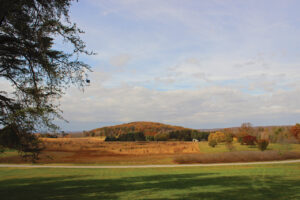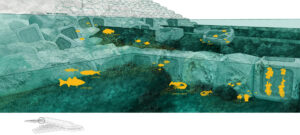April is World Landscape Architecture month, so we have a great opportunity to celebrate and spread the word about this global profession, which has such a tremendous toolbox for impacting the quality of life of our communities and — in fact —our planet.
Landscape architects regularly engage with what are commonly called ‘wicked’ problems. Wicked not in the sense of evil, but in the other definition of the word: a “wicked” problem is one that is difficult or thorny due to incomplete, contradictory, and constantly changing information, and it has requirements that are hard to recognize. So, problems like urban overcrowding, climate change, economic disparity, and inequity in green space access are all wicked problems. We expect designers to not only be able to help our societies conquer wicked problems, but also manage to create works of beauty that are a pleasure for people to occupy and use.
Ian McHarg’s influential — well, revolutionary — 1969 book Design With Nature focused landscape architecture students’ attention on the then relatively-new idea that we shape the earth best when we plan and design with careful regard to both the ecology and the character of the landscape. Listen to nature, for nature will not fail you. It’s no longer just about the flashiest plants, the most opulent design or the fanciest stonework – it’s an urgent inquiry about what the human-made landscape is contributing to the health of the natural one – and coming full circle back to the human one.
But as we look for solutions to our current climate crisis, we need not just to listen to nature, but to each other. Good ideas flow across national borders and through the ages. For every wicked new problem, there is someplace in the world where someone has had to deal with that same problem for a long time — and out of necessity found resourceful and even beautiful ways to cope with it. There are countless examples of cultures over history developing ways to deal with too much or too little water, excessive heat, bone-chilling cold. There are thousand-year-old earth-sheltered houses in China, passive solar heating ideas used 900 years ago by the Pueblo native Americans, and modular building techniques used in Japan for half a millennium. India has an entire vocabulary of different structures for capturing and storing precious rainwater going back centuries, and scientists recently rediscovered a 700 year old African technique for soil enrichment unmatched by any modern technology. Iran has a beautiful history of ice houses that can keep things cool in the desert – not unlike the springhouses so common across Kentucky in the 19th century.
The encouraging news today is that landscape architects and related professions are coming up with tools for addressing climate change that are really quite incredible.

One great example is Scape, a New York-based firm that devised the idea of the Living Breakwaters, an artificially-constructed 2,400 foot long active oyster reef to diversify marine life, add recreational potential and protect shoreline along the New York coast. It proposes a living reef composed of a woven web of ‘fuzzy rope’ that supports marine growth, generates a 3D landscape mosaic that attenuates waves and cleans millions of gallons of harbor water by harnessing the biotic filtration processes of oysters, mussels, and eelgrass. It aims to improve habitat and water quality, restore biodiversity to tidal marshes and encourage new relationships between New Yorkers and their harbor. Living Breakwaters is widely considered a model for climate-adaptive green infrastructure to enhance physical, ecological and social resilience along Staten Island’s south shore.

Living Breakwaters is only one of many stories about how landscape architecture is shifting focus away from the merely picturesque to the climate-adaptive. If you’d like to learn more about inspiring contemporary landscape architecture projects or check out some of the resources landscape architects use to calculate how their design will impact a changing planet, here are a few resources.
https://www.asla.org/climatemitigation.aspx
https://www.asla.org/uploadedFiles/CMS/About__Us/Climate_Action/ClimateGuide.pdf
https://www.landscapeperformance.org/benefits-toolkit/pathfinder-landscape-carbon-calculator
https://www.scapestudio.com/projects/oyster-tecture/
But remember: even though these projects are large-scale and high-tech, making small and simple landscaping acts to fight climate change can make a difference too, if enough people commit to them. Look around your own home landscape and find ways to design with nature. Try to look at your yard with a new eye, constantly asking yourself how each part of it is helping support a healthy ecosystem. Replace some or all of your lawn with native pollinator plants. Group plants together according to water need so you’re irrigating at a minimum. Support the delicate ecosystem by not using chemical fertilizers and try composting instead. You can find many more tips here:
https://gardening.cals.cornell.edu/garden-guidance/gww/
https://www.thegardencontinuum.com/blog/how-to-rethink-residential-gardening-for-climate-change

